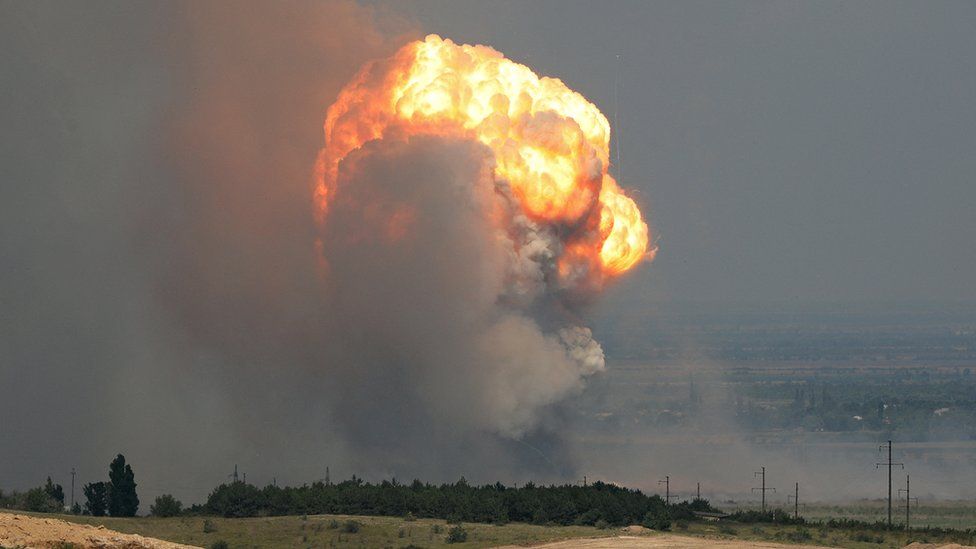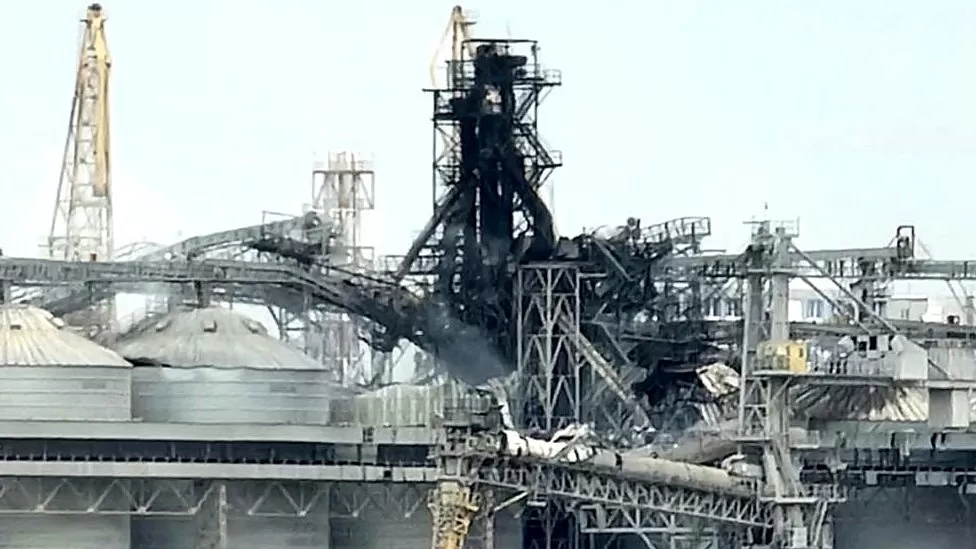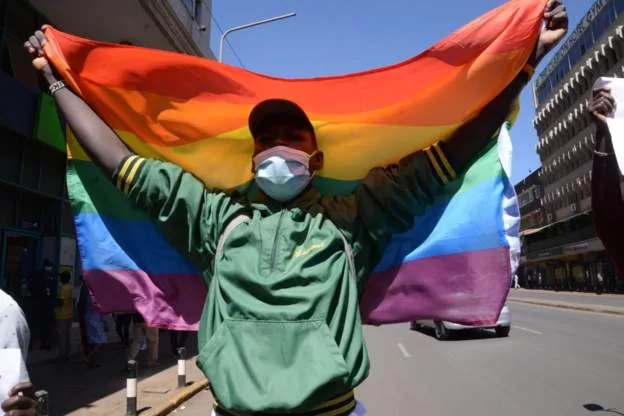Russian missile attacks on Ukraine’s Black Sea coast have destroyed 60,000 tonnes of grain and damaged storage infrastructure, officials say.
Agriculture Minister Mykola Solskyi said a “considerable amount” of export infrastructure was out of operation.
Russia has pulled out of an international grain deal in place since last summer, guaranteeing safe passage for exports across the Black Sea.
The Kremlin argued its demands for Russian exports had not been honoured.
Within hours of its withdrawal from the grain deal on Monday, Russia had struck the southern port cities of Odesa and Mykolaiv in the early hours of Tuesday.
It followed that up with more strikes overnight into Wednesday, targeting grain terminals and port infrastructure in Odesa and further down the Black Sea coast in Chornomorsk, two of the three ports that were included in the export deal.
Odesa military spokesman Serhiy Bratchuk called it a “truly massive attack”. The agriculture minister said the 60,000 tonnes destroyed in the strike were “supposed to be loaded on a large-tonnage ship and sent through the grain corridor 60 days ago”.
Ukrainian President Volodymyr Zelensky said each missile strike was a blow not just to Ukraine, but to “everyone in the world striving for a normal and safe life”.
France and Germany also condemned the attack. Germany Foreign Minister Annalena Baerbock said that by covering Odesa with a hail of bombs, Russian President Vladimir Putin was robbing the world of any hope of Ukrainian grain and “hitting the world’s poorest”.
The infrastructure ministry published a series of photos showing damage to silos and other grain facilities. Officials said there had been damage to wharves and reservoirs, but it was international Ukrainian traders and carriers that had suffered the most.
Russian war commentators said the damage proved that Kyiv was unable to shoot down the majority of Russian missiles and drones.
Officials said the co-ordinated attack involved Kalibr cruise missiles, Onyx supersonic and Kh-22 anti-ship missiles as well as kamikaze drones, fired from the Black Sea, Crimea and southern Russia. Although 37 Russian missiles and drones were shot down, a number did penetrate Ukrainian defences, they said.
“I saw a red flash in the window and reacted immediately,” one resident told the Reuters news agency.
“I went downstairs, it was noisy and filled with smoke outside, people were in panic, some were crying, glass shards were scattered all over. It was impossible to remain in the area.”
Russia had called its initial attack on Odesa a “mass revenge strike” for an attack on the Russian-built bridge over the Kerch strait linking occupied Crimea to Russia. Seaborne drones were blamed for Monday’s bridge strike that knocked out a section of bridge and killed a Russian couple.

Crimea saw further disruption on Wednesday. Some 2,200 residents were evacuated from four villages near a military training range after a fire triggered hours of explosions at a nearby ammunition depot.
Russian-installed officials also shut a 12-km (7.5-mile) section of the Tavrida motorway that links the cities of Simferopol and Sevastopol in southern Crimea to the bridge over the Kerch strait. Construction of the road by Russia’s occupation authorities began in 2017.
A series of explosions were heard in the area from about 04:30 (01:30 GMT) on Wednesday.
Officials did not explain the cause of the fire near the city of Staryi Krim. But unconfirmed reports on social media spoke of three Ukrainian strikes.
The Kremlin said Mr Putin had been briefed on the incident.
Russia’s appointee boss in Crimea, Sergei Aksyonov, said the cause of the fire at the military range was being investigated, but that no-one was hurt.
















